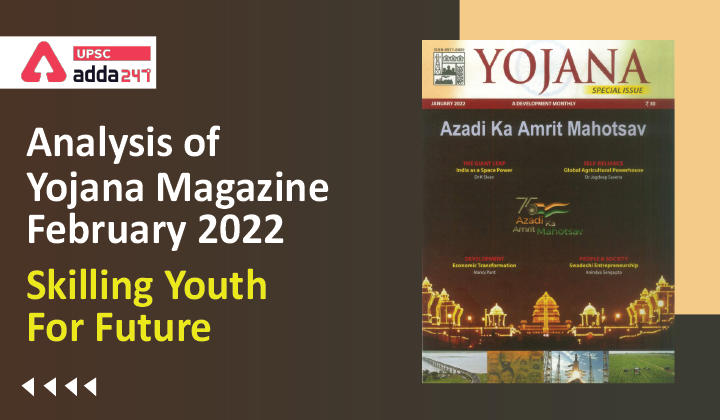Table of Contents
Analysis of Yojana Magazine: Skilling Youth For Future
Relevance
”GS 2: Education, Issues Relating to Development”
Introduction
- According to National Education Policy 2020, ‘The aim of education will not only be cognitive development but also building character and creating holistic and well-rounded individuals equipped with the key 21st-century skills.
- Though skill education in schools is one of the means towards this aim, NEP also mentions various challenges faced in its manifestation like perceived social status hierarchy associated with vocational education, lack of vertical mobility pathways, etc.
- NEP has also set a goal that by 2025, at least 50% of learners through the school and higher education system
What is CSS of Vocationalisation of Secondary Education?
- Centrally Sponsored Scheme (CSS) of Vocationalisation of Secondary Education(1988); the scheme was revised in 2011 & 2014.
- Currently, the scheme is being implemented as part of the Centrally Sponsored Scheme’ Samagra Shiksha’ and has been aligned with the National Skills Qualification Framework (NSQF).
- The vocational subjects are introduced as an additional subject at the Secondary level and as a compulsory elective subject at the Senior Secondary level.
- The scheme covers Government schools and Government aided schools.
Efforts to further the goals set by National Education Policy 2020
At all the levels
- Vocational education at each level of the school (Primary, Secondary and Higher Secondary).
- At the Secondary and Sr. Secondary levels, NSQF compliant vocational courses are offered to the students along with other academic subjects.
Adaptability
- A unified credit accumulation and transfer framework is being devised for the integration of academics and Vocational Education.
Coverage and Convergence
- Several initiatives for achieving the goal of up to 50%.
- Under Samagra Shiksha new schools are being approved every year.
- The Hub and Spoke model is being implemented where schools with requisite infrastructure will act as hubs and provide skill education to the children from surrounding spoke schools.
States’ Capacities
- Vocational Education is being supported by national agencies/institutions viz. Pandit Sunderlal Sharma Central Institute of Vocational Education (PSSCIVE), National Skill Development Corporation, Sector Skill Councils, etc.
- Similarly, Capacities of State level institutions like the State Council for Vocational Education and Training (SCVET), State Council of Educational Research and Training (SCERT) and its subordinate bodies (DIETs) can be developed.
Way Forward
- Emerging trends, such as the Internet of Things (loT), machine learning, Artificial Intelligence (AI), and robotic process automation need to be explored.
- Digital skilling should become the core programme of all the skill development activities.
- We also need to work on Future Skills like Cloud Computing, Coding, Gamification, Telematics, Data analysis, Drone Technology, Augmented Reality & Virtual Reality (AR-VR).
- CBSE has already introduced courses like Data Science, Coding, and AI.
Conclusion
With ever-changing socio-economic conditions, Skill Education also needs to keep up the pace and keep it relevant for students, industry, as well as communities. Skill courses, methodology, and assessments should remain effective for students’ holistic growth as envisaged in NEP.



 TSPSC Group 1 Question Paper 2024, Downl...
TSPSC Group 1 Question Paper 2024, Downl...
 TSPSC Group 1 Answer key 2024 Out, Downl...
TSPSC Group 1 Answer key 2024 Out, Downl...
 UPSC Prelims 2024 Question Paper, Downlo...
UPSC Prelims 2024 Question Paper, Downlo...
